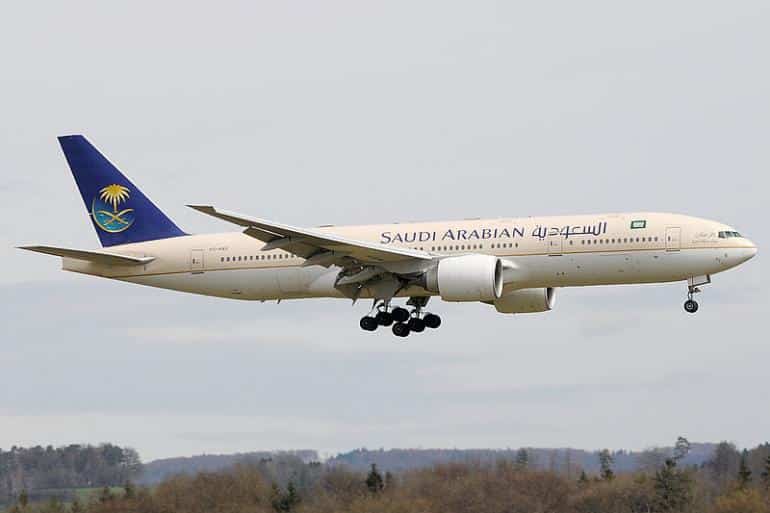Airlines
AviLease Buys 167 Standard Chartered Aircraft For $3.6 Billion

In order to position itself among the top 10 worldwide lessors by 2030, Aircraft Leasing Company (AviLease) has agreed to pay $3.6 billion for the aircraft leasing operations of UK-based Standard Chartered.
This Saudi Arabian airline may order 80 Boeing 787 planes.(Opens in a new browser tab)
The jet lessor, based in Riyadh and supported by the Public Investment Fund (PIF), will buy a portfolio of 100 narrow-body aircraft and take on the servicing of an additional 22 aircraft. The integrated platform will manage and supervise 167 aircraft, including a $6 billion owned fleet of 145 aircraft and a $800 million managed fleet of 22 aircraft. According to a statement from AviLease, the corporation leases airplanes to 46 airlines around the world.
The agreement comes as the bank works to meet its 2024 goals by concentrating on business sectors where it distinguishes apart from rivals. The sovereign wealth fund of Saudi Arabia owns the aircraft lessor AviLease, which has its headquarters in Riyadh and is also known as Aircraft Leasing Co. In January, StanChart stated that it was looking into potential changes for its worldwide aviation finance operation.
Virgin Atlantic takes delivery of its first A330neo(Opens in a new browser tab)
“The sale of our Aviation Finance leasing business allows us to continue focusing our efforts on those areas where we are most differentiated, and to make further progress on our Return on Tangible Equity journey,” stated Simon Cooper, Chief Executive Officer of Standard Chartered. I want to express my gratitude to our Aviation Finance coworkers, whose dedication to developing an excellent franchise over the course of more than 15 years made this transaction successful.
After the deal closes, Standard Chartered will see a rise in its common equity Tier 1 capital ratio of about 19 basis points and a gain of about US$0.3 billion. The net proceeds from the transaction are expected to be factored into Standard Chartered’s overall management of the capital and liquidity position of Standard Chartered and its subsidiaries.

Airlines
Air India Rolls Out A350s for Delhi-New York JFK and Newark Routes

In a major development for North American travelers, Air India has announced the deployment of its state-of-the-art Airbus A350-900 aircraft on two key routes: Delhi to New York and Delhi to Newark.
The service on the Delhi-New York route will commence on November 1, 2024, while the Delhi-Newark route will see its inaugural flight on January 2, 2025.
The introduction of the air india a350 will bring significant enhancements to Air India’s offerings, particularly with the launch of its Premium Economy class. air india retrofit This new class will feature 24 wide seats arranged in a 2-4-2 configuration, providing passengers with extra legroom and a more comfortable flying experience.
Soon, Air India aircraft will feature onboard WiFi & all-new cabins: Click here
“We are encouraged by the positive guest feedback we have received from the domestic deployment of our air india a350 interior to offer our hero product on the Delhi-New York JFK and Delhi-Newark routes. This is a significant leap forward for our U.S. operations that also underscores our commitment to continuous improvement,” said Campbell Wilson, Chief Executive Officer & Managing Director of Air India.
The A350’s Business class will set new standards with 28 private suites, each equipped with full-flat beds, direct aisle access, and personal wardrobes. Economy class will be configured to accommodate 264 passengers in a 3-4-3 layout. Across all cabins, passengers will enjoy the latest Panasonic eX3 in-flight entertainment system, offering over 2,200 hours of content.
Air India’s First A350-900: Interior, Routes, &Inflight Features: Click here
This strategic deployment marks a notable enhancement in Air India’s U.S. operations, with 60% of its flights to the U.S. now featuring new or upgraded cabin interiors. The air india new international routes currently operates 51 weekly flights to five U.S. destinations: New York JFK, Newark, Washington DC, Chicago, and San Francisco.
The revamped cabins, advanced in-flight entertainment systems, and improved service standards represent air india wifi commitment to providing a superior travel experience. “We believe this enhanced offering will solidify Air India’s position as a leading carrier and attract travellers seeking a world-class flying experience between India and the United States,” the airline stated.
Seats on these flights are now available for booking on Air India’s website, mobile app, and through travel agents, ensuring that passengers can easily plan their journeys on these newly upgraded routes.
Air India Economy vs Qatar airways economy: which is best?:Click here
-

 Travel1 week ago
Travel1 week agoAir India to Expand US Operations with Three New Routes After a Decade
-

 Travel2 weeks ago
Travel2 weeks agoWhy We Should Avoid These Stamps in a Passport
-

 Airlines1 month ago
Airlines1 month agoInvestigations Reveal Fake Chinese Titanium in Boeing and Airbus Jets
-

 Tech4 weeks ago
Tech4 weeks agoChina’s CATL Plans 1,800-Mile Electric Plane Launch by 2027
-

 Airport3 days ago
Airport3 days agoTop 10 Largest Airports in the World by Size
-

 Aerospace4 weeks ago
Aerospace4 weeks agoChina’s Fighter Jets Turn Wings into Autonomous Drones
-

 Airlines4 days ago
Airlines4 days agoAir India Rolls Out A350s for Delhi-New York JFK and Newark Routes
-

 Defence3 weeks ago
Defence3 weeks agoBoeing Enhances Chinook with New Engines and Block II Upgrades at $96 Million







